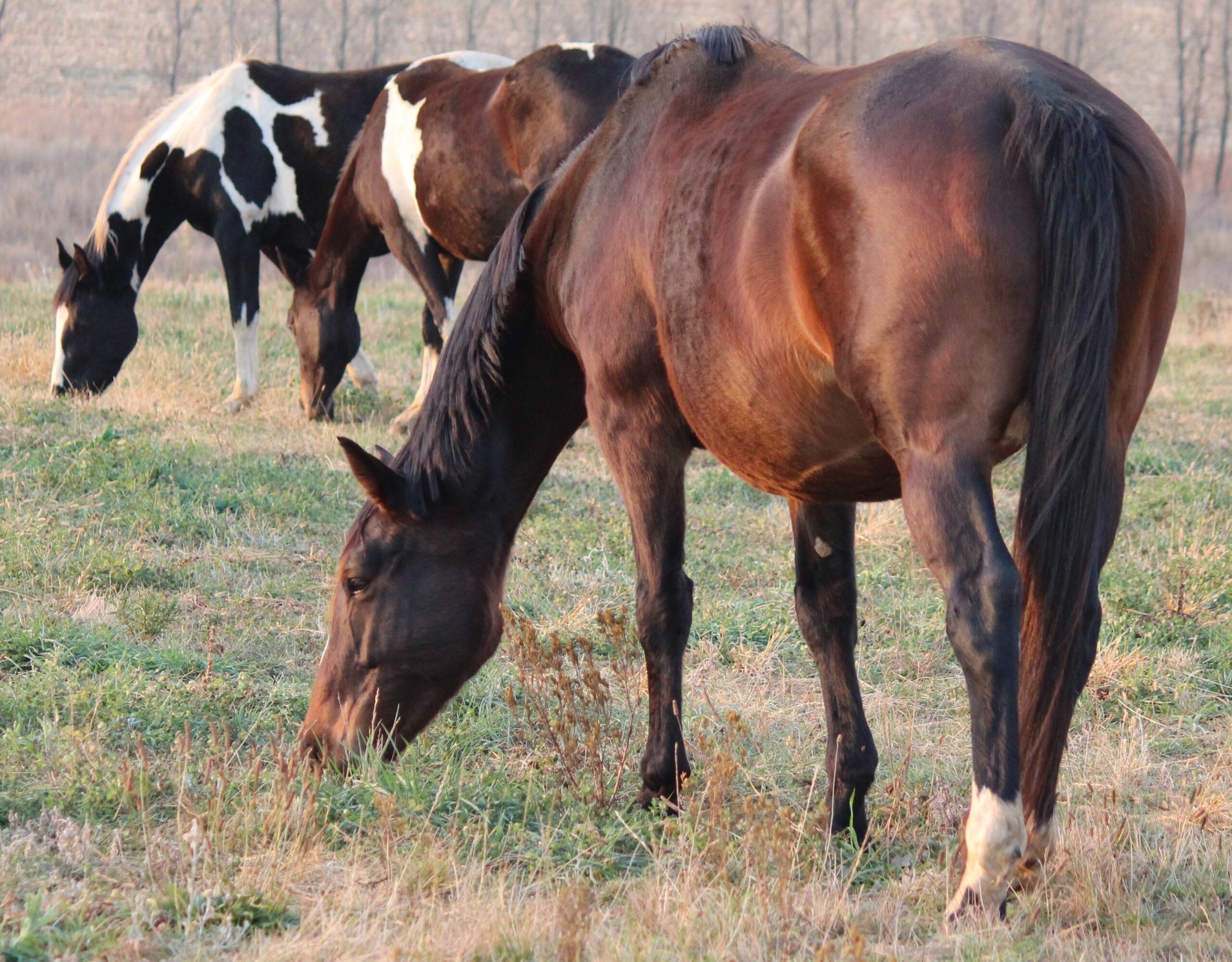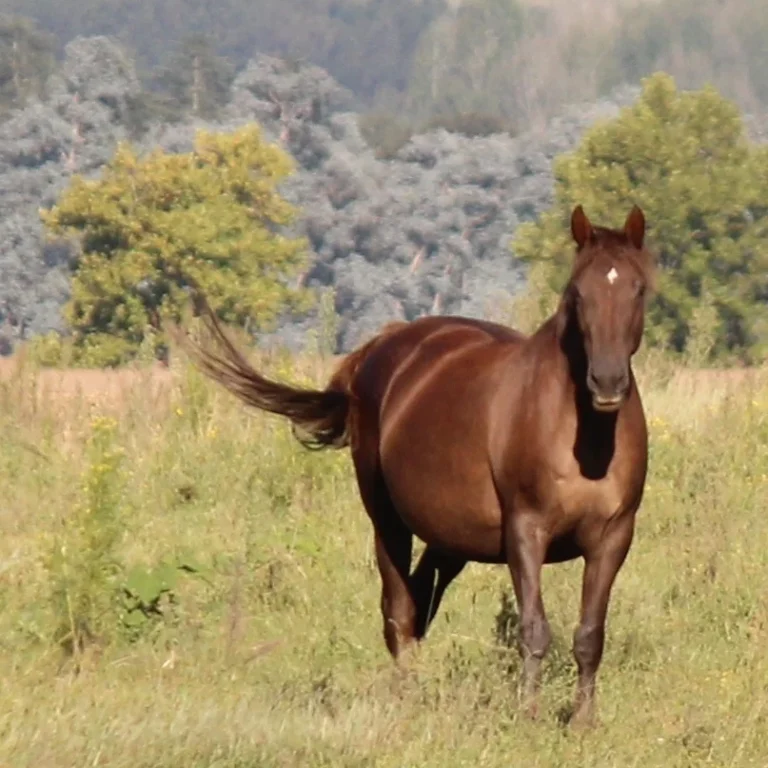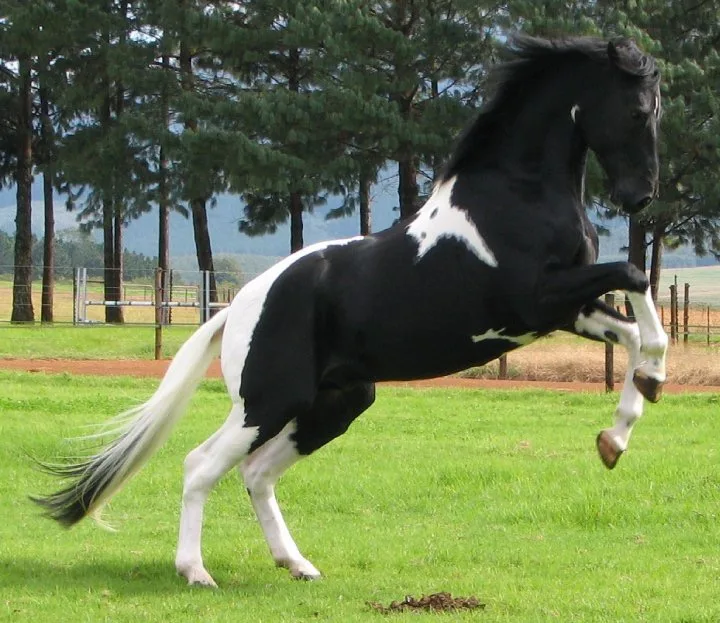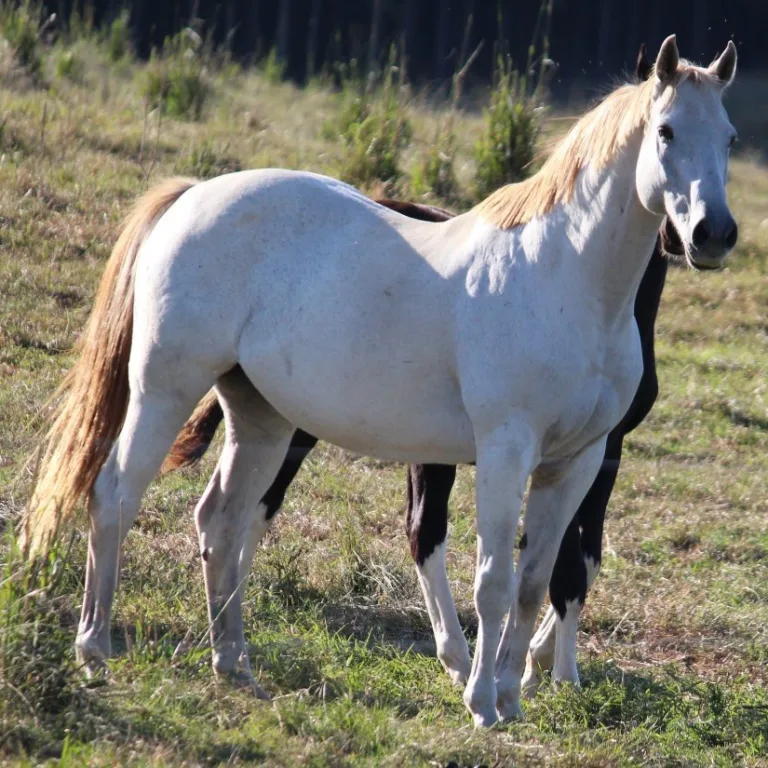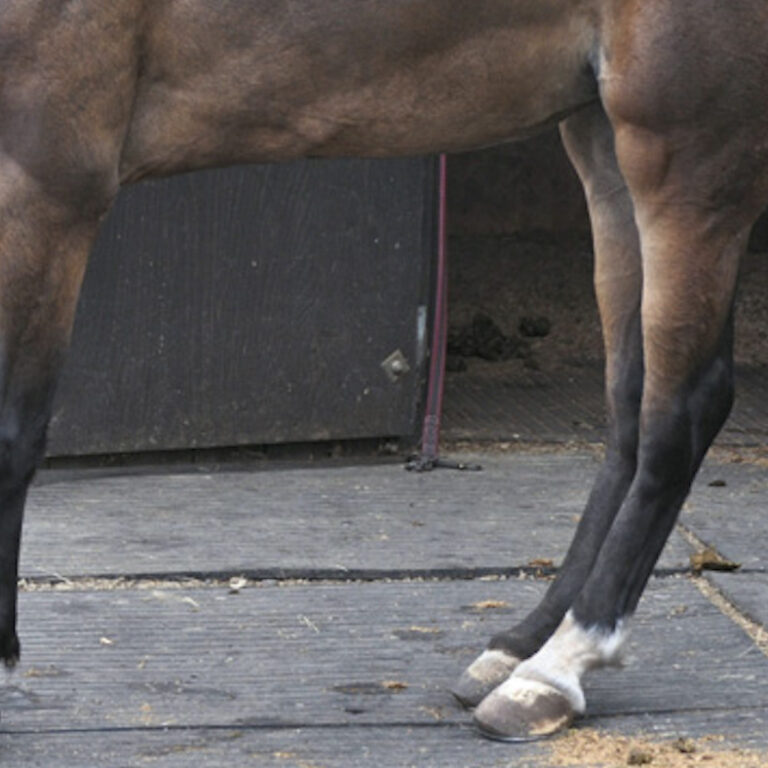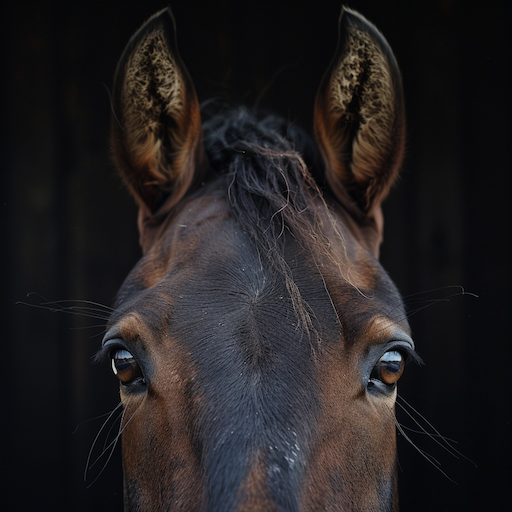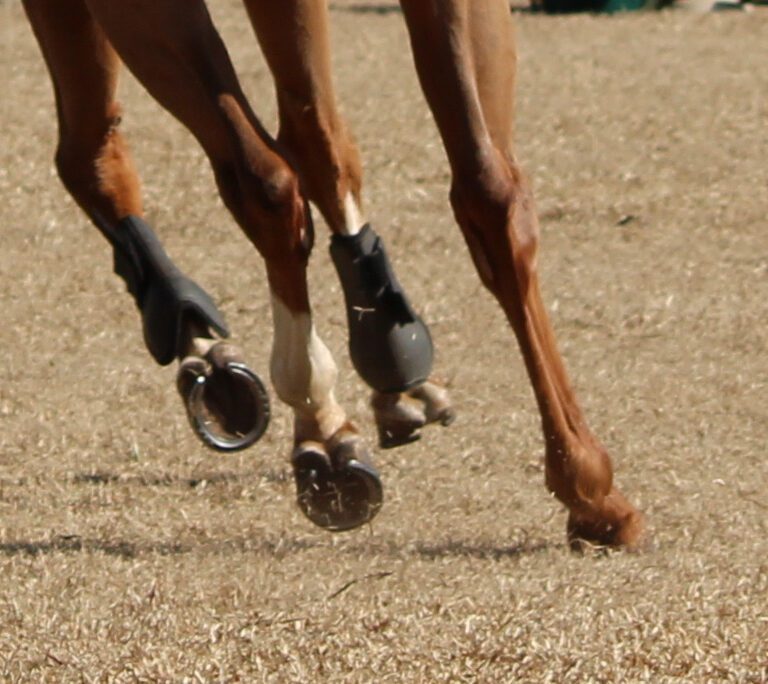Blanketing Your Horse: Protect Your Horse This Winter
The question as we move towards winter is when should you blanket your horse. As we start pulling out our fleeces and jerseys our minds start moving towards blanketing our horses. This is a much-debated topic and just because we are feeling the cold does not mean that our horse is.
Firstly they have a fur coat (of varying lengths at this time of the year) which is very good at keeping them warm and their larger body processes temperature very differently from ours.
Adapting to different climates
Horses are extremely adaptable to different climates – they are found in some of the hottest and coldest places in the world ranging from -40ºC to 60ºC.
As warm-blooded animals, their core body temperature should be 38ºC however in extreme temperatures the extremities in their body temperature can drop as low as 5-10ºC standing in snow or reach as high as 60ºC if standing in a hot desert.
what does it mean to be warmblooded?
Coldblooded animals such as reptiles need to spend as much time in the sun as possible to keep warm and they frequently hibernate in the winter when the sun is not hot enough. Warmblooded animals try to keep their core temperature at 38ºC irrespective of the surrounding temperature or environment they find themselves in. This is called thermoregulation.
The advantage of being warmblooded is that the animal can stay active all year round and does not need to hibernate during the cold winter months.
The disadvantage of being warmblooded is that a lot of energy is needed to generate the heat that is needed to keep the body at the optimal body temperature in cold weather and the same happens when trying to keep the body cool in the hot summer months.
The fuel to adjust to these temperatures comes from the energy stored in the animal’s body which comes from breaking down the food that the horse (in this case) eats.
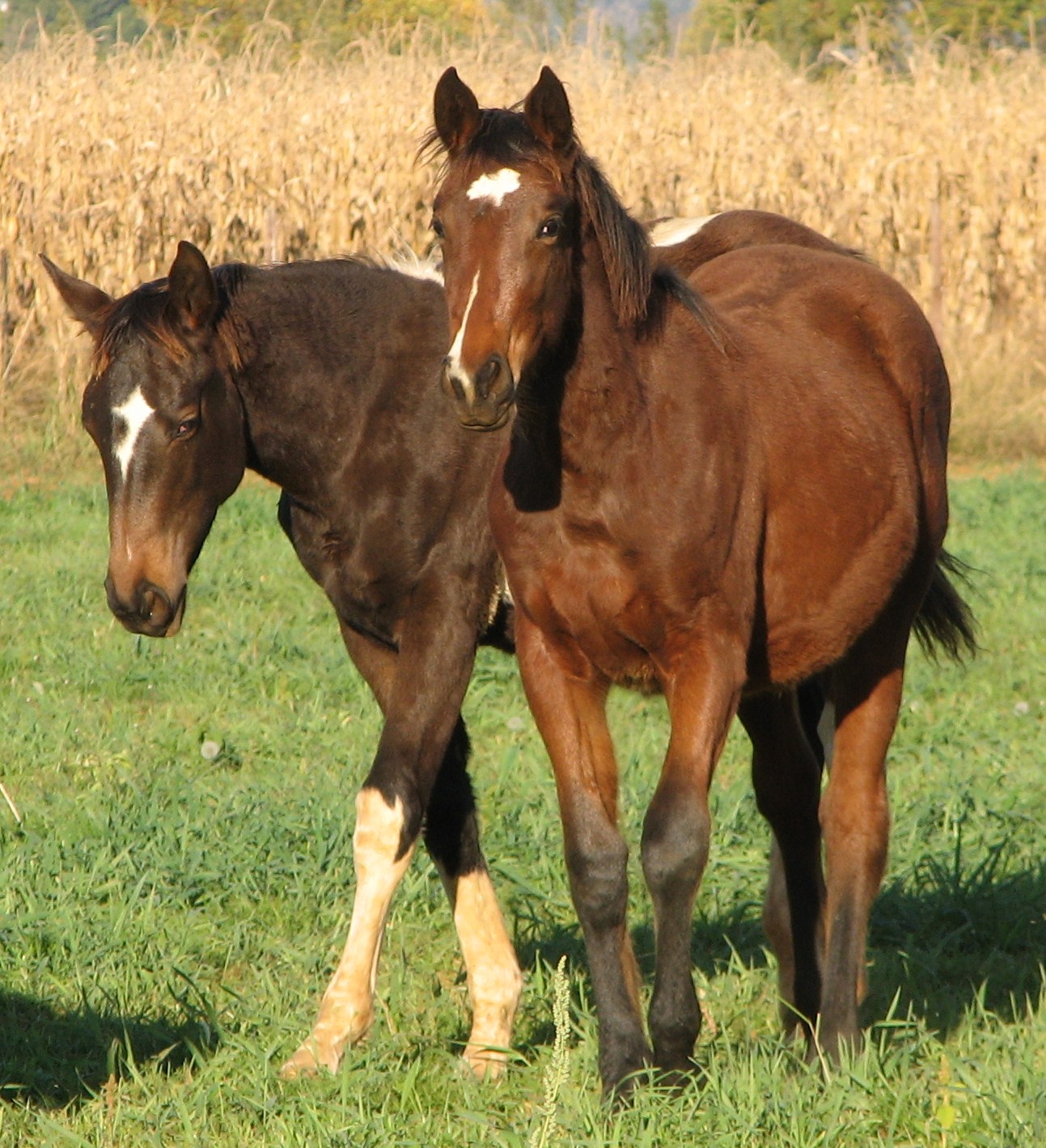
What determines what temperature a horse feels?
A horse feels cold when the air temperature drops below 0ºC and will feel hot when the temperature goes over 25ºC. Within this range, horses can very easily regulate their temperature. Outside of these temperatures horses might use other means to keep themselves warm or cool.
Above 25ºC the horse’s heartbeat may increase to circulate more blood to the skin to be cooled, this is when you see the veins stick out on your horse. He may start to breathe quicker and start to sweat. They can also seek shade or if possible go into any available water to cool down.
Below 0ºC your horse will need to start burning more fuel to keep warm and may look for shelter from the wind and rain. A horse can let its limbs drop to a lower temperature than its body by reducing how much blood flows into its legs. If they are very cold they will also shiver to help keep their body temperature up.
A horse’s body temperature is a balance between how much heat is being produced and how much is being lost.
Factors that influence your horse maintaining its body temperature
Weather
The colder the weather the bigger the difference between the horse’s body temperature and the cold air outside and the faster a horse will lose body heat. This is known as convective body heat loss.
If wind chill is added to this body heat is lost even quicker by the process of forced convection. Getting wet in the rain causes their body temperature to drop even quicker. The coldest conditions for your horse are when they are wet in a cold wind, in this situation a horse will get cold very quickly.
Size
If you are small you lose heat quicker than an animal with large body size. Large animals usually have an advantage in cold climates and smaller animals usually fair better in hotter environments.
Some horse breeds cope better with the cold than others but generally bigger horses cope with the cold better than smaller horses.
Age
Older horses will battle to keep warm much like humans and young horses may also lose more body heat than full-grown healthy horses.
Older horses are more likely to have less body fat, may have health problems, and be less active which will make it more difficult for them to regulate their body temperature.
Diet
High fiber diets produce more heat than a high starch or fat-based diet. Ad lib quality fodder can keep your horse in good condition with enough body fat and fuel to burn to keep their body temperature up. Increased feed when the temperature drops below 0ºC will help your horse maintain its body temperature.
Breed
The more compact breeds tend to be able to conserve their body temperature better than tall, rangy horses. Cobby-type horses are more able to keep warm than the finer thoroughbred.
Winter coat
The horse’s coat keeps its body warm by trapping warm air between the hairs. This is why horses battle to keep warm when they are wet. The thickness of your horse’s coat will have an influence on how warm it is able to keep warm, a thick coat will keep his body temperature compared to if your horse has been clipped.
Shelter
A shelter is very important to keep horses warm in wet cold climates. A horse must be able to get dry to keep its body temperature well regulated.
Depends on the horse
Just like us humans horses feel temperatures very differently from others. Some horses will grow a thick winter coat in winter and others don’t grow any coat.
Our mares that are out all year round that were in good condition would hardly grow winter coats during the coldest time of the year. The young horses would grow very thick winter coats during the winter.
Before using a blanket it is important to know your horse well and read the signs to monitor when it is feeling cold.
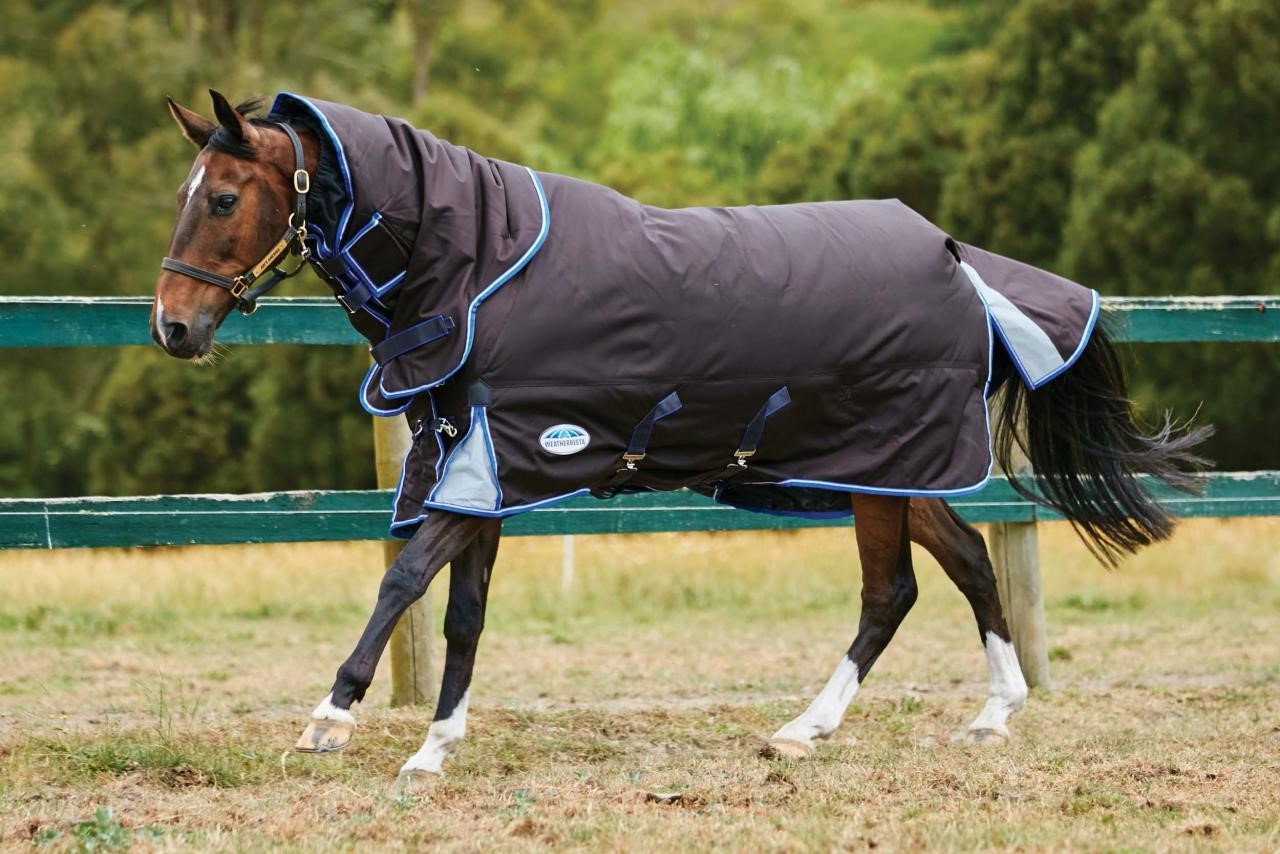
Why do we use rugs?
When your horse is put into an artificial environment like a stable it may have shelter but it cannot move around to keep itself warm. Putting a blanket on your horse will help it maintain its body temperature.
The decision of when to put a blanket on your horse depends on a few factors:
- Older and clipped horses will need to be blanketed first.
- When the temperature drops between 5ºC-10ºC.
- Ideally, start with lighter rugs and double up or increase the thickness of the rug as the temperature drops.
- Horses without access to a shelter in the very cold and specifically wet weather will need thick waterproof blanketing.
- Wind and rain will induce the biggest heat loss.
What not to consider when deciding whether to blanket your horse:
- Don’t base your blanketing your horse on how cold you feel. Humans break down temperature more quickly and feel the cold much more than a horse does.
- Feeling your horse’s legs and extremities to tell if it is cold is not accurate. Feeling just behind its whithers will give you a better idea of his body temperature. If he already has a blanket on and he feels cold on his whither then put on another blanket. If he feels hot and sweaty then it’s time to take off the blanket or replace it with a thinner one and if he still feels cool to the touch add another blanket.
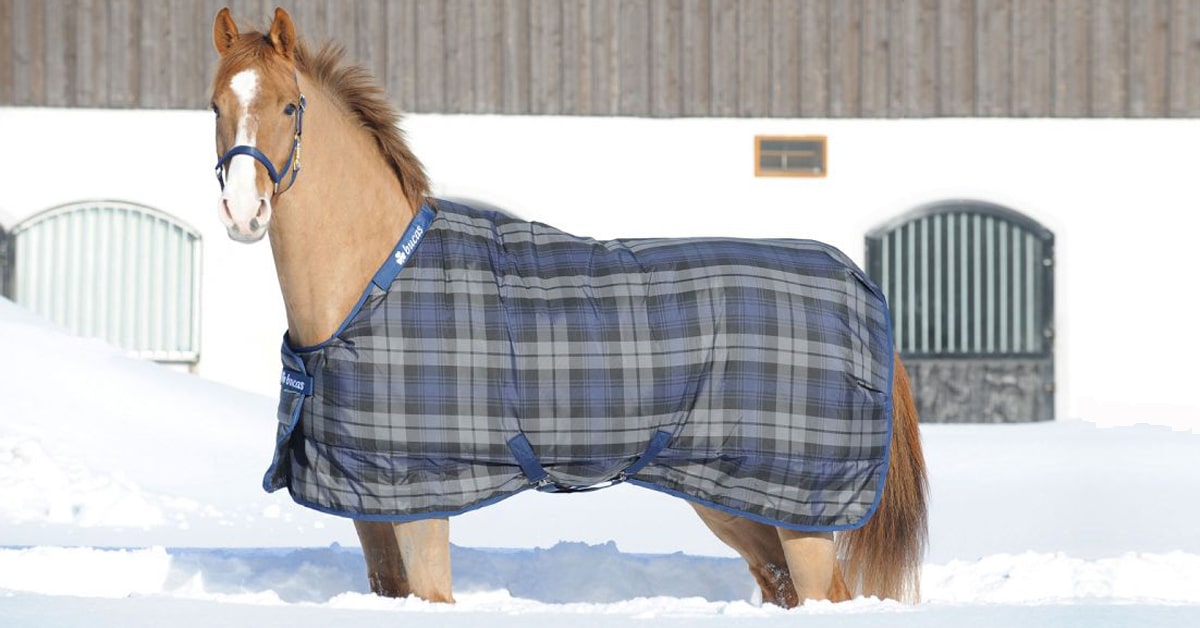
Don’t over rug your horse
It is just as bad to have a hot horse sweating under a rug (if not worse) than a cold horse. A horse that sweats too much and stays wet under a blanket can cause the skin to get hyper-hydrated which can lead to damage to its skin and infections as well as make your horse extremely uncomfortable.
It is very important for your horse to have some exposure to sunlight and vitamin D. Make sure your horse has at least one hour a day of direct sunlight every day without a blanket on. Vitamin D regulates calcium and phosphorus in bone and a deficiency can let to problems in bone density.
It is also very important to regularly rearrange your horse’s blankets to make sure they are comfortable and not wearing on your horse – most particularly your horse’s shoulders do get worn, it is an idea to buy a shoulder cover that stops your horse from losing his fur on the shoulder points.
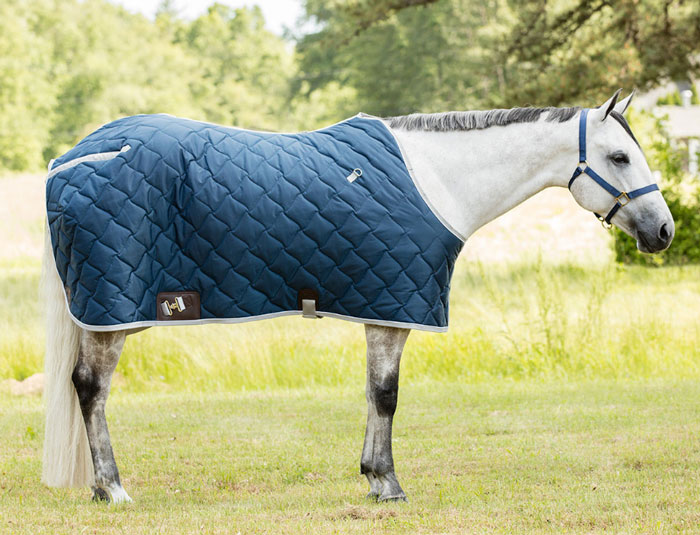
What thickness?
A horse’s winter coat when dry is considered to be around a 1 tog rating. A summer duvet has a tog of 4.5 which would already raise the horse’s temperature by 3/4 times. Some really thick winter duvet-type blankets can reach a tog rating of 15 which would only be necessary for a newborn foal or a very sick horse.
It is important to use common sense when blanketing your horse. Do not over blanket them to make yourself feel better, a horse is better off being slightly cold than sweating under a rug. Start with a thin rug as the temperature starts cooling down and move onto thicker blankets as the temperatures drop lower monitoring the temperature of your horse by putting your hands in his blankets – the temperature should be nice and warm and most definitely not hot and wet.
A horse has a very good way of insulating its body in cold weather by trapping warm air in its winter coat. If you put a blanket on that is not warm enough you can get his coat to lie down thereby he will not be able to trap the warm air and he will be colder than if he had no blanket on. You are removing that natural ability to trap warm air and him insulating himself naturally.
Make sure that blankets used for turnout are waterproof, a wet blanket on your horse will be much worse than no blanket at all. A heavy thick wet blanket will make your horse much colder than if he didn’t have one on.
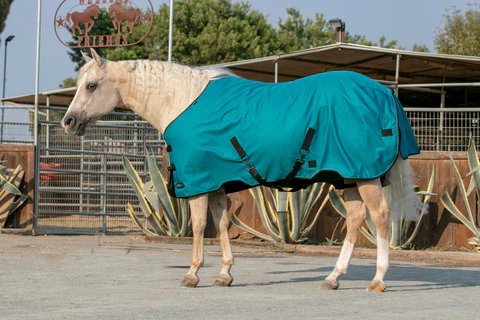
Fitting the blanket properly
Getting the right size blanket is essential for your horse’s comfort to keep him warm and safe. The blanket should not be tight over your horse’s withers or around his chest. There are many shapes of blankets available for sale and your horse may need a certain make to fit it correctly.
Make sure you use a turnout rug when your horse goes out in a blanket. These come with extra ties around the horse’s back legs that will stop the blanket from slipping. It is very important to make sure an outdoor rug fits properly and it doesn’t slip as it is most likely your horse will run around a bit especially when it is cold so the blanket must be fitted very well. If his blanket slips it can cause a bad accident.
I always loved the look of warm horses snug in their blankets in the stables on a cold winter evening, putting your hand inside the blanket will give you a good indication of how warm your horse is. In England we got to stop our hands from freezing by keeping them under the horse’s blankets for a minute – always a welcome relief on those icy winter evenings.
Further reading
Horse Blanketing FAQs When fitting a blanket, make sure any leg straps are secure, and condition your horse to wearing the blanket in his stall before turning him out …Temperature: Unclipped30-40° F: no blanket, or only a lightweight40-50° F: no blanket20-30° F: no blanket, or a light- to midweight
When to Blanket a Horse — We suggest blanketing your horse if they have been clipped, since clipping removes their “guard” hairs that protect them from the cold, rain, …

